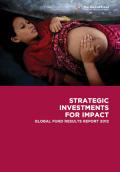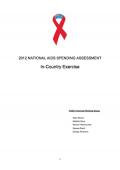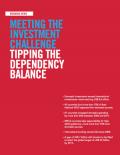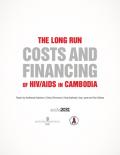What's New
Displaying results 3521 - 3530 of 4914

Resource | Publications,
The Lao Social Indicator Survey (LSIS) is a nationally representative sample survey. Its field data collection was conducted from October 2011 to February 2012. Among the 18,843 successfully interviewed nationally in the survey, 97,421 household members were listed. Of these, 47,820 were male and 49,601 were female. The average household size found in the survey was 5.2.

Resource | Publications,
In 2012, a behavioural survey among youth was conducted. Its aims were to assess the knowledge, attitudes and risk behaviours among youth in order to better identify how to deliver targeted interventions aiming to reduce risk of HIV and STI infections. 674 youth were recruited from various islands in the Cook Islands.

Resource | Publications,
The Global Fund Results Report 2012 presents the latest data from recipients of Global Fund grants in 151 countries – as well as the latest evidence of impact on the HIV, tuberculosis (TB) and malaria pandemics, and the most up-to-date information on Global Fund financing. It highlights the continued progress and the scale-up achieved by low- and middle-income countries around the world, made possible by the collaboration and efforts of hundreds of governments, donors, recipients, technical agencies, private companies and civil society organizations.

Resource | Publications,
The Fiji Government, via the National HIV Board, is pursuing a robust initiative to capture strategic information regarding the national response to HIV & AIDS vis-à-vis the tracking of financial information from financing sources to actual expenditures.
This report outlines the concerted effort of the NASA Technical Working Group, as part of its workshop from 10th – 12th December 2012, to track expenditure and engage stakeholders in the consistent utilization of the NASA resource tracking system as a vital component in reporting.

Resource | Publications,
Domestic investments have surpassed global giving in 2011. Low- and middle-income countries invested US$ 8.6 billion in 2011. While countries are tipping the balance, international assistance still remains critical and indispensable in the short and medium term. International assistance from donor government and philanthropies has remained stable at around US$ 8.2 billion in the past few years.

Resource | Publications,
The methodology for carrying out this study has centered on three elements:
- projection of the course of the epidemic under different program scale-up scenarios;
- estimating the resources required for addressing the HIV/AIDS epidemic as it unfolds according to the different scenarios; and,
- assessing how the resources required in the future might be financed.

Resource | Publications,
This report is a compiled analysis of two National AIDS Spending Assessments (NASA) conducted in 2010 and 2011 in Viet Nam by a team of consultants hired by UNAIDS Vietnam, with the support from Viet Nam Administration of HIV/AIDS Control. The first NASA captured AIDS expenditure by nearly all national and international funding sources in Viet Nam over the two-year period 2008 to 2009, while the second NASA captured this expenditure for 2010. The two NASA track the resources of health services as well as social-mitigation, education, labour, justice and other sectors to embody the multisectoral response in Viet Nam. Through its findings, the NASA aim to inform and support the development of Viet Nam’s new National Strategy on HIV/AIDS Prevention and Control to 2020, with a vision to 2030.

Resource | Publications,
The National AIDS Authority (NAA), as part of its mandate to monitor and evaluate the national response to HIV and AIDS in Cambodia, conducted the third National AIDS Spending Assessment (NASA III) in early 2011. The assessment covered 2009 and 2010, and together with data obtained in the two previous NASA rounds, has allowed for analysis of trends in resource flows from 2006 to 2010. The three assessments have produced valuable data which are used to monitor Cambodia’s National Strategic Plan for Comprehensive and Multi sectoral Response to HIV and AIDS (NSP) and to report on expenditures nationally and globally.

Resource | Publications,
The National HIV and AIDS Spending Assessment (NASA) approach to resource tracking is a systematic methodology used to determine the flow of resources intended to combat HIV and AIDS. The tool tracks actual expenditure (public, private and international) both in health and non-health sectors that comprises the National Response to HIV and AIDS. It represents HIV Response in the monetary values.
The first NASA exercise in Papua New Guinea captures 2009 and 2010 calendar years.

Resource | Reviews and Snapshots,
The HIV and Sex Work Collection provides eleven detailed case studies on HIV and sex work programmes and advocacy from seven countries in the Asia Pacific region: Bangladesh, China, Fiji, India, Myanmar, Nepal and Thailand. It also provides an analysis of the key lessons learned for delivering and scaling up evidence and rights-based responses.
The HIV and Sex Work Collection is designed for multiple audiences. It is a valuable tool for: programming managers, implementers and service providers, including government, NGOs and sex worker organizations, in the design and delivery of programmes; policy makers and development partners in planning and allocating resources for strengthening and scaling up effective interventions; and advocacy for a comprehensive response that focuses on evidence and rights-based interventions to address HIV in the context of sex work.





